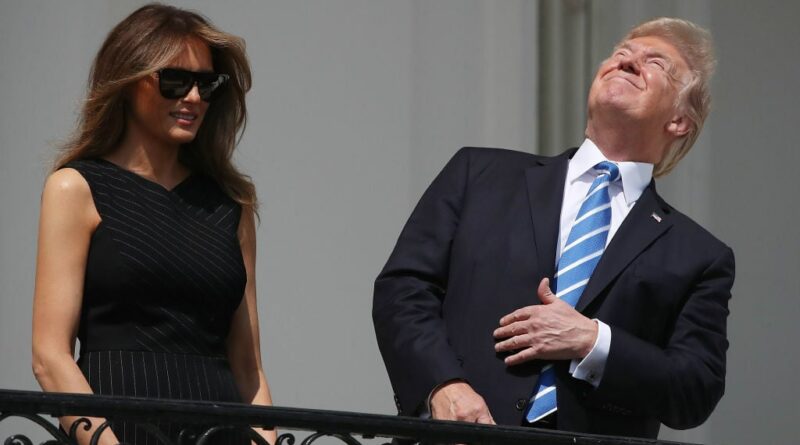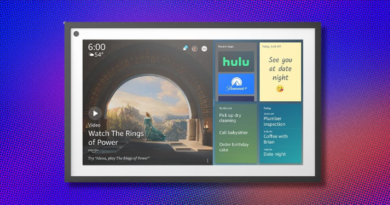That iconic Trump meme may save eyes this solar eclipse
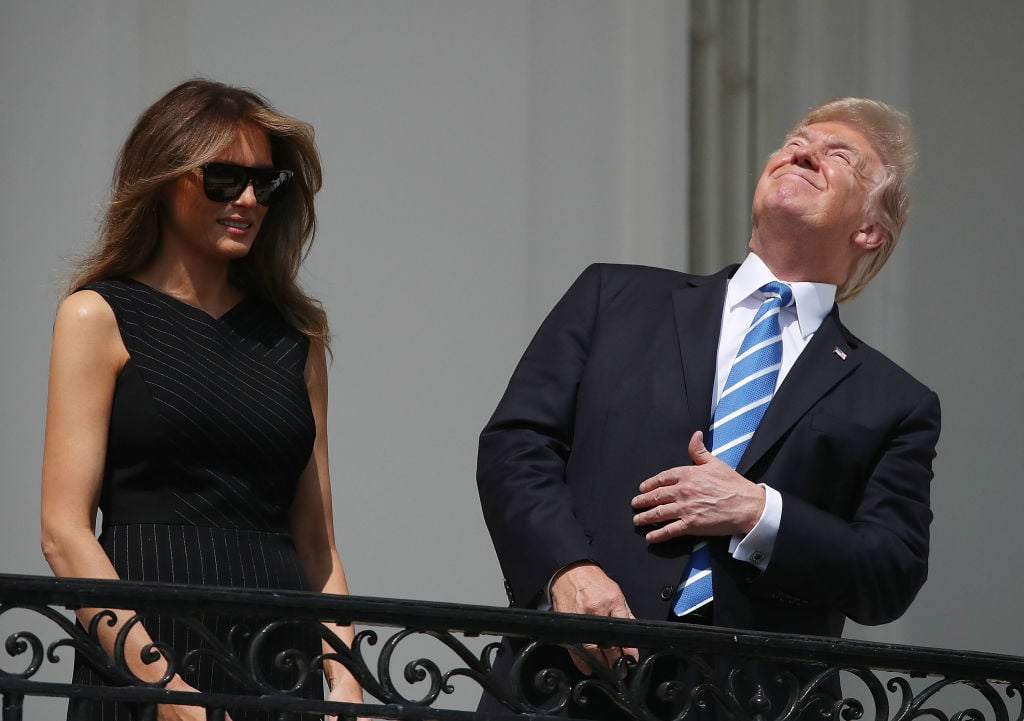
About seven years ago, photographers grabbed their cameras for the rare chance to shoot a total solar eclipse, with the sun’s wispy atmosphere revealed against the dark sky.
But perhaps the most memorable photos taken during 2017’s Great American Eclipse were not of the corona but of former President Donald Trump stepping out on the White House portico to experience the space event for himself.
In an intriguing twist, the famed Trump eclipse photos may have served as one of the farthest-reaching, albeit unintended, public service campaigns about the dangers of staring at the sun. NASA and several medical associations have tried to spread the word that there’s nothing fake news about solar retinopathy, (although, OK, not in those words).
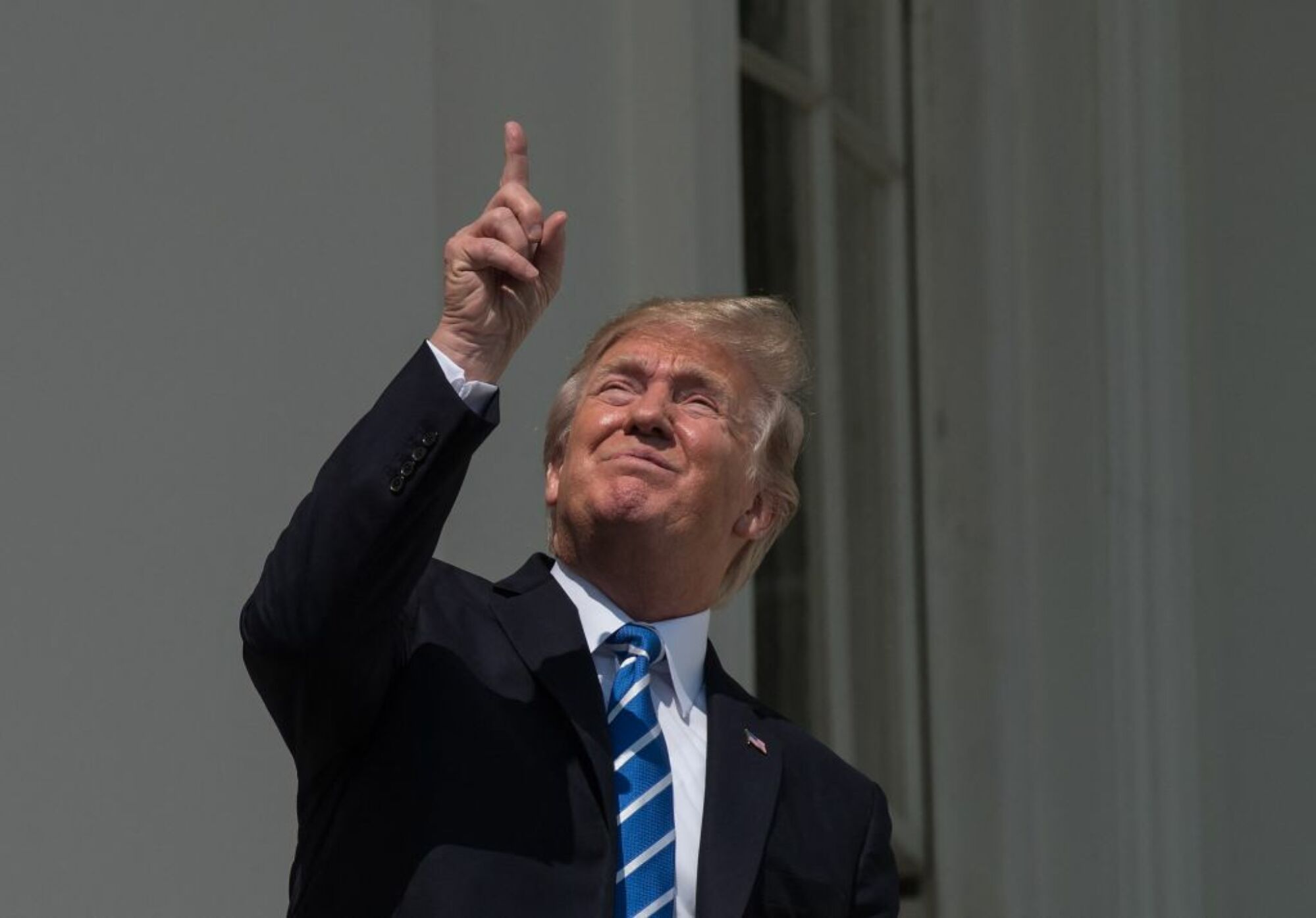
On Aug. 21, 2017, Trump stole a couple of glances at the exposed sun, seemingly unperturbed by the warnings from ophthalmologists and his political handlers. With a grimace tugging at the corners of his mouth, he squinted skyward. His protective glasses, which he later put on, were nestled in his jacket pocket.
“Don’t look,” an aide shouted from below.
Too late. A meme was born.
Here’s what added fuel to the fire: Hours before the president even stepped outside, a user on the social platform X, then known as Twitter, posted a pair of fake, satirical New York Times news alerts claiming that Trump had “suffered permanent eye damage” after staring at the solar eclipse, according to KnowYourMeme.com, a company that collects and researches internet phenomena. Within 24 hours, that tweet, by @leyawn, received tens of thousands of likes and retweets.
“It was kind of like a Nostradamus pre-meme about something that would later become a meme,” said Don Caldwell, Know Your Meme’s editor-in-chief.
And in true meme fashion, it spawned a life of its own. The front page of the New York Daily News the next day featured one of the photos with the headline “Not Too Bright!”
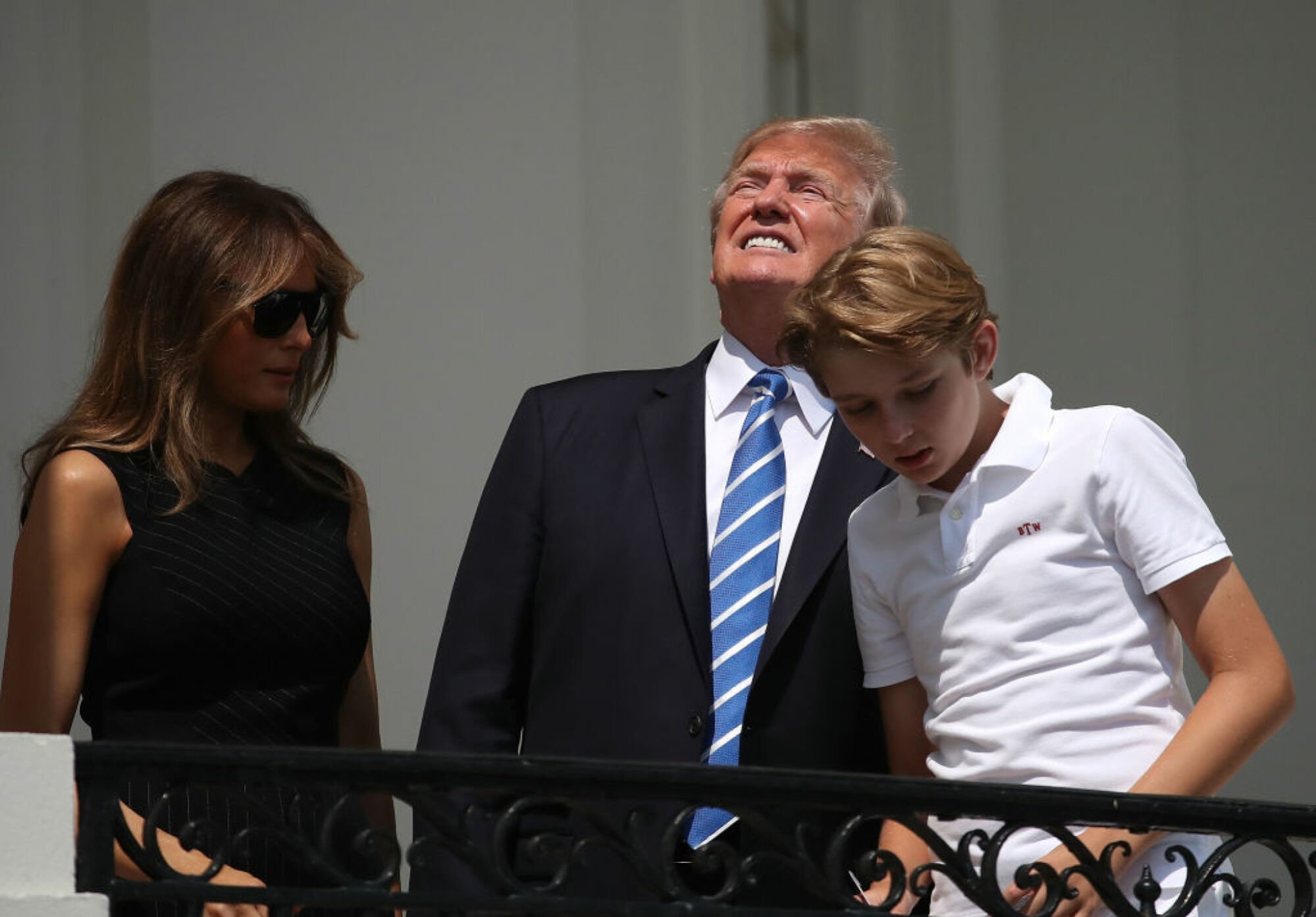
Now the country is in deja vu. It’s “decision 2024,” and the experts believe Americans will be inclined to make a good choice, thanks in part to these famous images: We’re talking, of course, about the decision to wear solar shades or not on April 8, when a swath of the United States will experience yet another total eclipse.
At first, the 2017 Trump photos and video footage made Dr. Ralph Chou unhappy. Chou is a Canadian who led the international charge to make safety standards for solar eclipse glasses. But looking at the sun during an eclipse is actually a common foible, he said, and sometimes a temptation too strong to veto.
“The Donald was no different from anybody else in that respect,” Chou told Mashable.
And added: “It just underscores that nobody who is standing under the sun is immune to these kinds of things.”
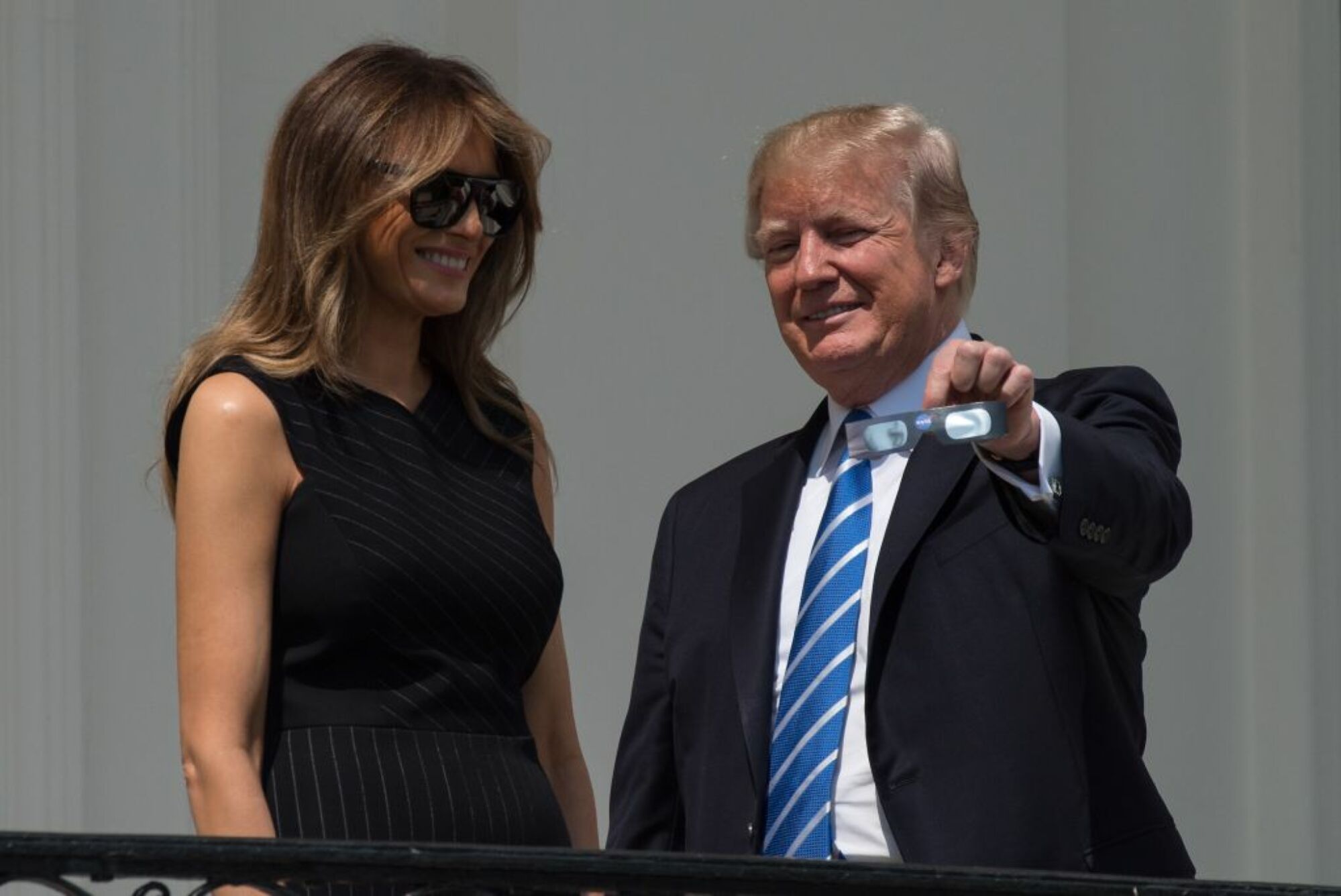
In the vast political genre of memes, most are wielded by the detractors, intending to paint their opponent as incompetent or unfit. But on the web, one viral photo can immortalize a moment — and its impact can be more than a punchline. It can even unify a population under a shared idea.
Like, say, looking directly at a partial eclipse is unwise?
“Memes are very powerful tools for spreading messages, sentiments, tribal bonding,” Caldwell said. “There’s all kinds of things that memes can do, and I think this one likely had many of those things going on.”
The moon will sweep its shadow over the continent as it crosses in front of the sun on April 8, starting on Mexico’s western coast, arcing from Texas to Maine, entering Canada through Ontario, and exiting the continent from Newfoundland. Major U.S. cities in this corridor, known as the “path of totality,” will include Dallas, Indianapolis, and Cleveland.
When — and only when — the moon completely conceals the surface of the sun can people in the path remove their protective eyewear without risk of visual impairment or blindness.
The retina’s job is to convert light into electrical signals for the brain. When a person looks at the sun without protective solar filters, the radiation can easily overtax the retinas. As a consequence, cells start to suffer chemical attacks and heat up to the point of frying the tissue.
“It just underscores that nobody who is standing under the sun is immune to these kinds of things.”
Some people think as long as they just make quick glances, they’ll be fine. But experts say several little peeks during the day can be as harmful as a long stare. Some folks also believe if their eyes don’t hurt, they haven’t caused any damage. But retinas don’t have pain receptors.
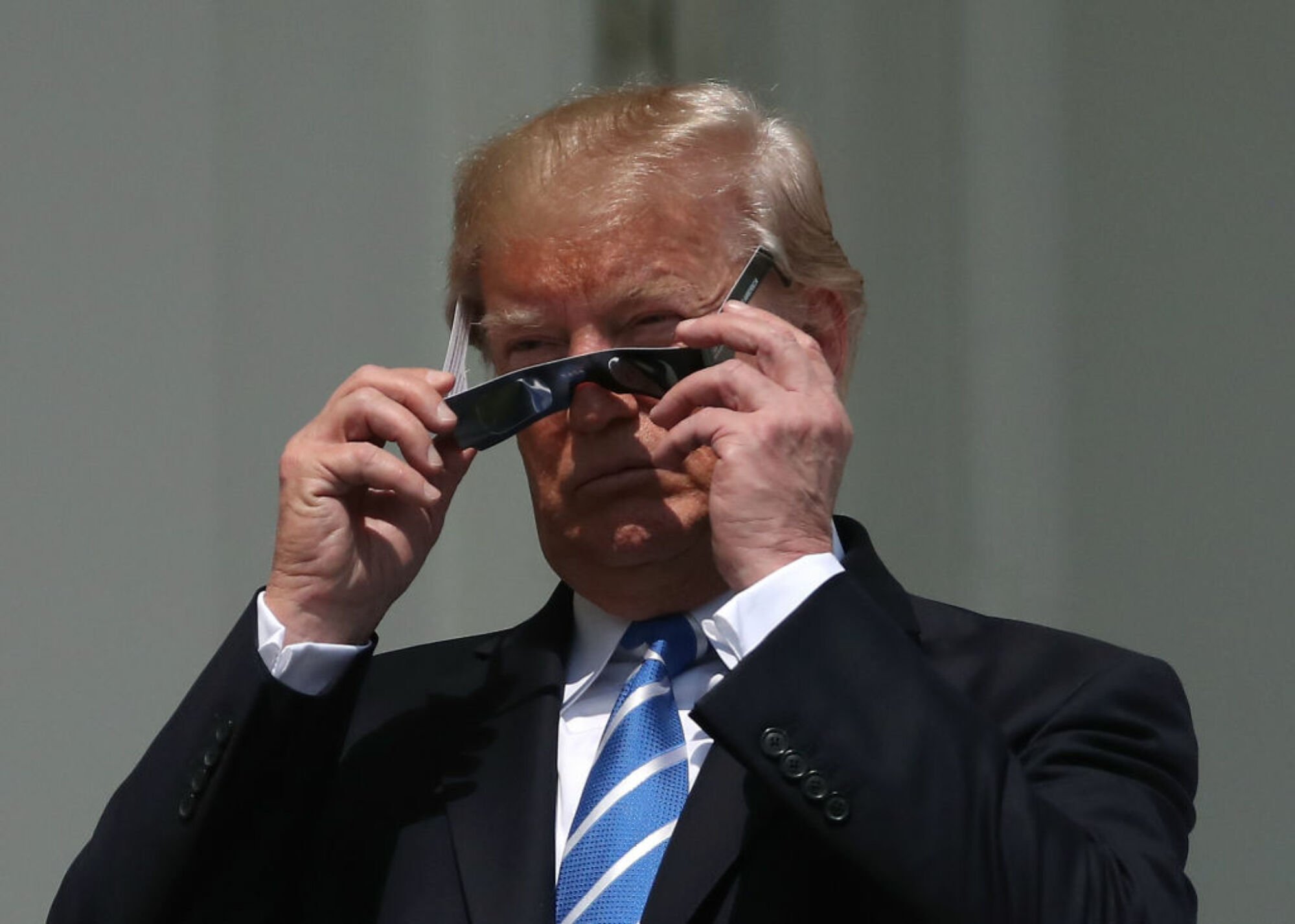
However people are getting the message about potential solar eye injuries, it seems to be working, based on how White House onlookers reacted to Trump’s momentary slip, Chou said.
“I also heard a lot of people reminding him right away, as soon as they saw what he was doing, ‘Get your glasses on, get your glasses on,’ and he did,” Chou said. “For once, he actually listened.”
The question now is whether he’ll don the protective glasses from the campaign trail on April 8.
“It should be on one of those betting websites: Is he going to look at the eclipse again?” Caldwell said. “I wonder what the over-under would be.”
